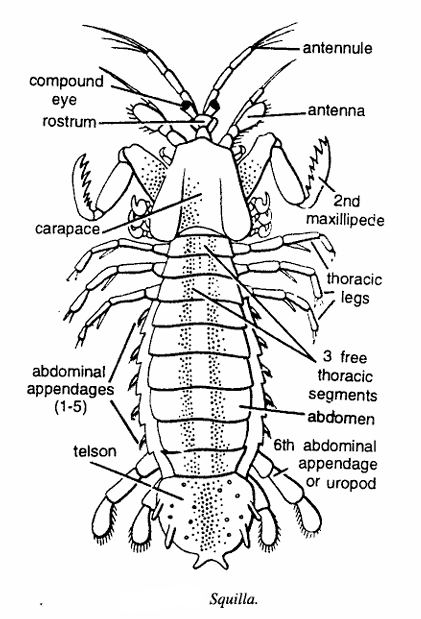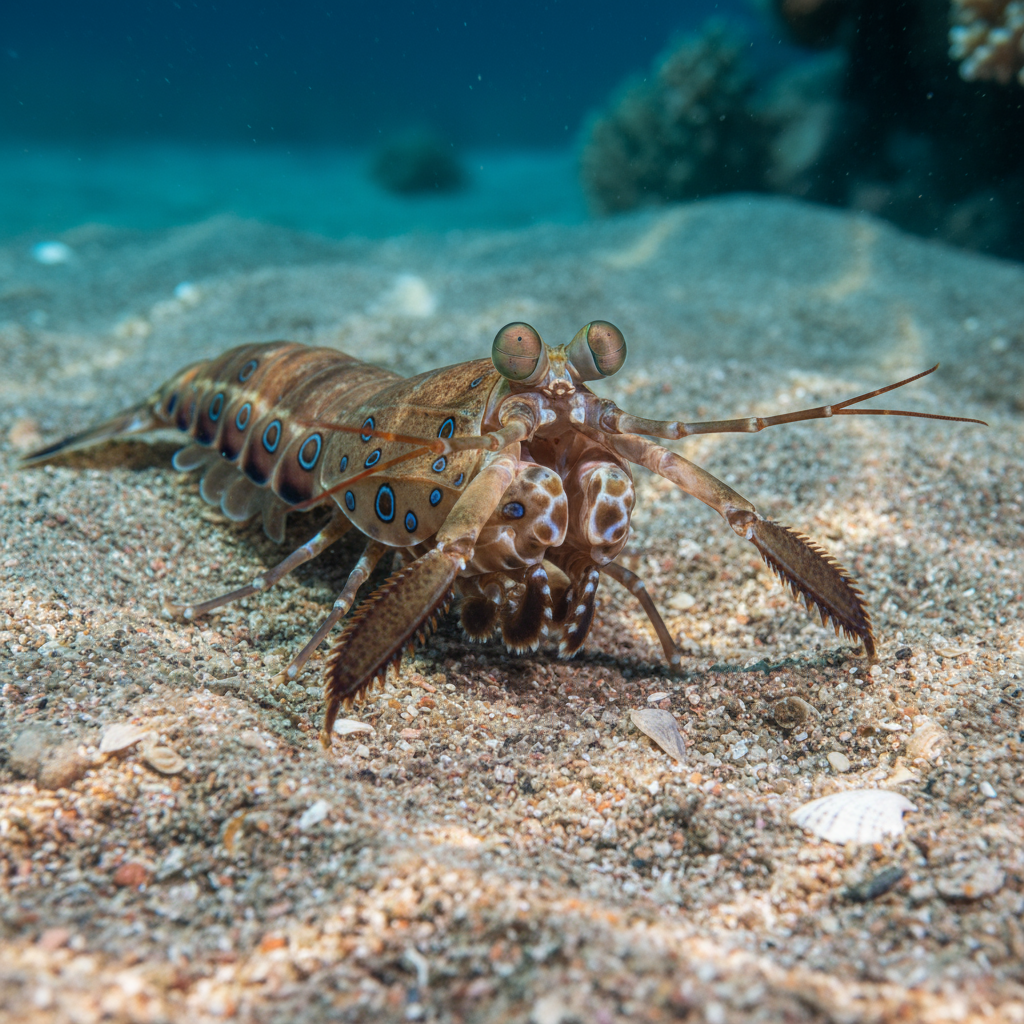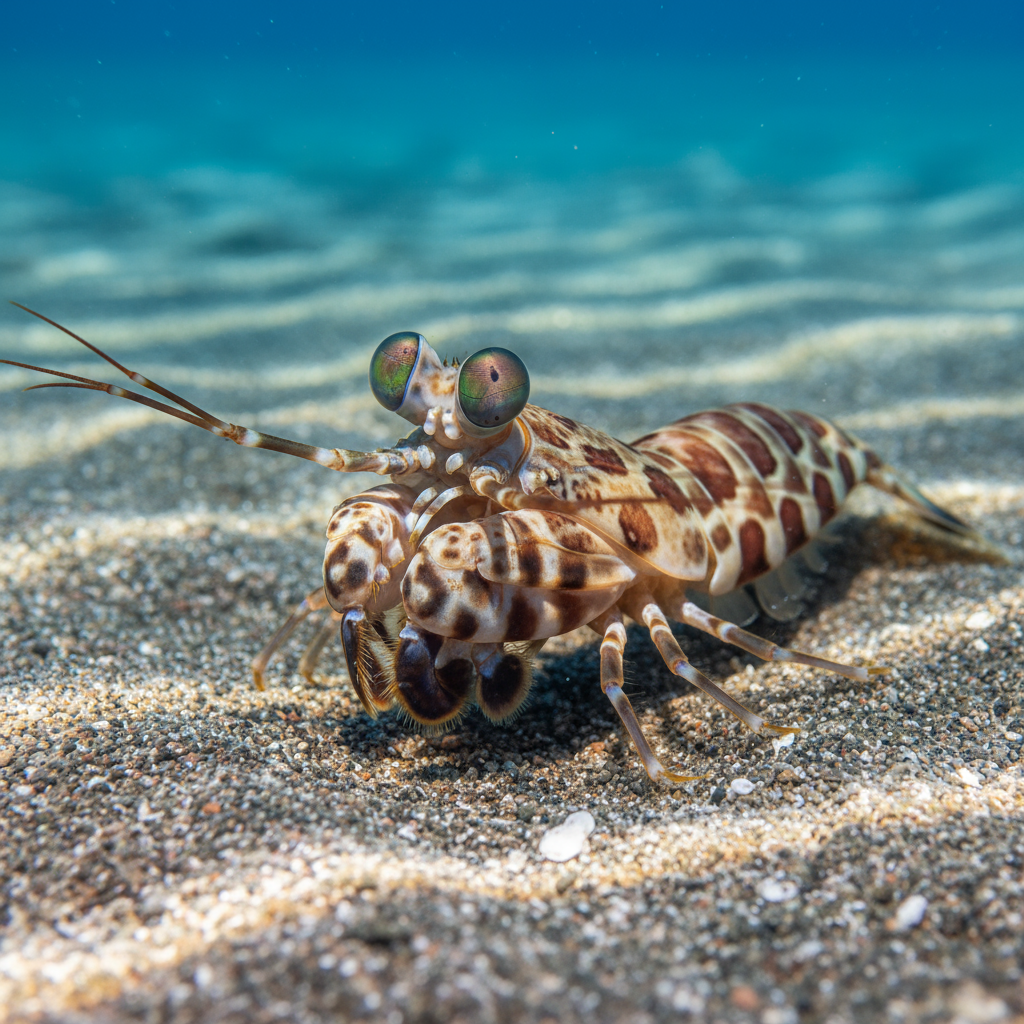Squilla: Morphology, Classification, Habitat, and Ecological Role of the Mantis Shrimp
Squilla is a genus of mantis shrimps belonging to the family Squillidae within the order Stomatopoda. Mantis shrimps are carnivorous marine crustaceans known for their powerful raptorial appendages used for hunting prey. Squilla species, such as Squilla mantis, are notable for their spear-like forelimbs, which they use to stab and capture soft-bodied prey. These crustaceans inhabit shallow coastal areas, especially sandy and muddy bottoms, where they dig U-shaped burrows. Squilla mantis is commercially important in the Mediterranean and Eastern Atlantic.
Classification of Squilla
| Taxonomic Rank | Name | Characteristics |
|---|---|---|
| Kingdom | Animalia | Multicellular eukaryotic organisms |
| Phylum | Arthropoda | Segmented invertebrates with jointed appendages |
| Subphylum | Crustacea | Aquatic arthropods with chitinous exoskeleton |
| Class | Malacostraca | Largest class of crustaceans |
| Order | Stomatopoda | Mantis shrimps with powerful raptorial claws |
| Family | Squillidae | Burrowing mantis shrimps with spear-type appendages |
| Genus | Squilla | Spear-type mantis shrimps like Squilla mantis |

Habit and Habitat
Squilla mantis is primarily found in the Mediterranean Sea and Eastern Atlantic Ocean, including coasts from the Gulf of Cádiz to Angola, as well as around the Canary Islands and Madeira. They inhabit sandy and muddy substrates, particularly in areas influenced by river runoff with suitable sediment for burrowing. Squilla species live at depths ranging from shallow coastal waters to about 150 meters, with the highest densities at 50–60 meters.
They construct U-shaped tunnels in the substrate that provide shelter and hunting vantage points.
Geographical Distribution
Squilla species, particularly S. mantis, have a Mediterranean and Eastern Atlantic distribution. They have historically been found as far north as Galicia and the British Isles but are now absent from some northern locations.

General Characteristics
- Body is whitish, semi-transparent and is differentiated in cephalothorax, thorax and abdomen measuring 25 cm in length.
- Carapace is small, flat uncalcified and fused with only three thoracic segments leaving at least four uncovered.
- Rostrum covers anterior region. There are two free segments in the head bearing pedunculate eyes and antennules respectively.
- Head appendages are bilobed eyes, antennules and antennae.
- First five pairs of uniramous thoracic appendages serve as maxillipedes, the second being the largest, sub-chelate and raptorial. The dactylus is armed with teeth on the inner margin. There are no oostegites.
- Last three thoracic segments bear walking legs. Ahdomen composed of 6 segments, is broader and elongated than eephalothorax. The first five abdominal segments with longitudinal ridges (carinae).
- Abdomen has large and biramous pleopods. The first five pleopods have branchiae or gills attached to exopodites while the sixth pair of abdominal limbs form a tail fan with the telson.
- Heart is greatly elongated extending through the thoracic and abdominal regions.
- Larvae are pelagic and in their general form resemble the zoaea larva of crab.
- Body Size: Up to 20 cm in length; commonly 12 to 18 cm.
- Color: Generally dull brown with distinct brown eye spots encircled in white near the telson.
- Appendages: Forelimbs specialized as long spear-like appendages for capturing prey.
- Eyes: Highly developed compound eyes on stalks, capable of complex visual processing.
- Body Shape: Flattened and segmented body adapted for burrowing.
Special Features
- Powerful Raptorial Appendages: Used for spearing or smashing prey depending on species.
- Vision: Exceptionally complex eyes with multiple photoreceptors for detecting polarized and multispectral light.
- Behavior: Nocturnal hunters emerging from burrows to capture prey.
- Commercial Importance: Only mantis shrimp commercially fished in the Mediterranean, with significant annual catch.
- Cultural Significance: Consumed as seafood under local names such as pacchero or canocchia.
Identification
Identification relies on:
- Morphological features such as body size, coloration, and eye spot patterns.
- Spherical spots on the telson encircled by white rings.
- Shape and function of raptorial appendages.
- Habitat and depth range.

Life Cycle and Reproduction
Squilla mantis is gonochoristic, with distinct males and females. Females provide maternal care by brooding eggs in tunnels, using maxillipeds to clean and oxygenate eggs. Larvae develop inside the tunnel before hatching. Reproductive activity peaks during warmer months, aligning with environmental conditions.
Ecological Role and Importance
- Predation: Controls populations of fish, shrimps, and other invertebrates.
- Burrow Engineering: Modifies benthic habitat through burrow construction.
- Fisheries Impact: Important commercial species supporting local economies.
- Biodiversity: Part of diverse marine food webs and ecosystems.
- Research Subject: Study of their vision and biomechanics informs biology and robotics.
References
- https://en.wikipedia.org/wiki/Squilla_mantis
- https://www.sealifebase.se/summary/Squilla-mantis.html
- https://animaldiversity.org/accounts/Squilla_empusa/
- https://en.wikipedia.org/wiki/Mantis_shrimp
- https://bugswithmike.com/guide/arthropoda/crustacea/malacostraca/stomatopoda/squillidae/squilla
- https://pmc.ncbi.nlm.nih.gov/articles/PMC11394382/
- https://www.chesapeakebay.net/discover/field-guide/entry/mantis-shrimp
- https://www.barrierreef.org/the-reef/animals/mantis-shrimp
- https://www.britannica.com/animal/Squilla
